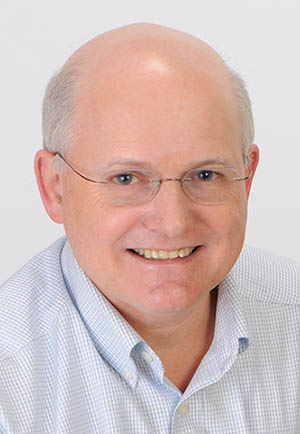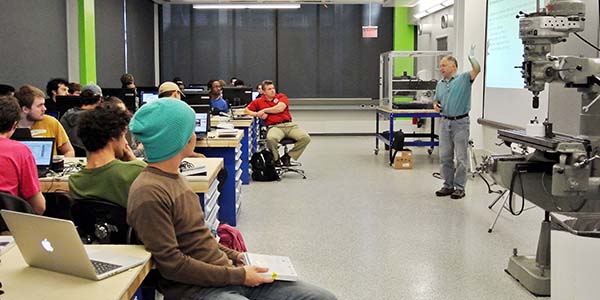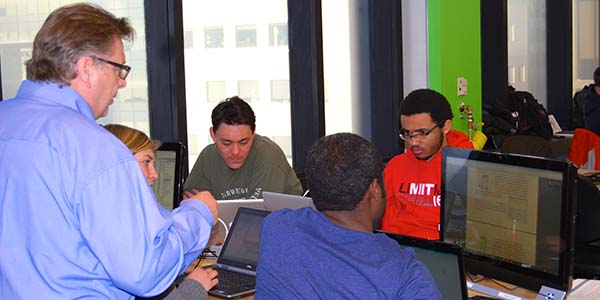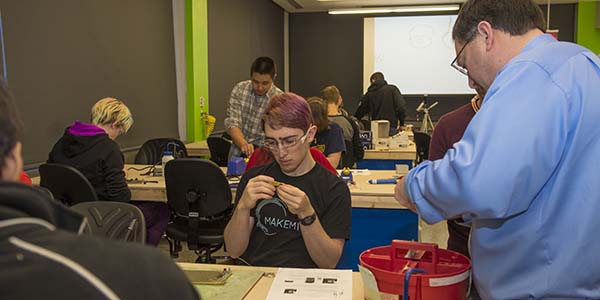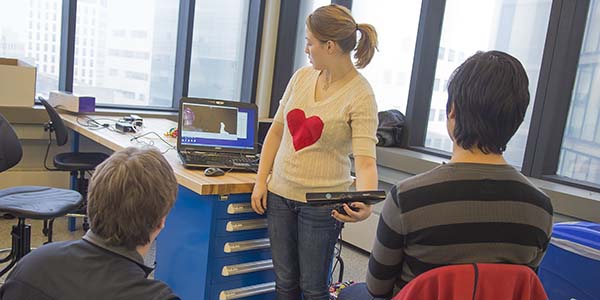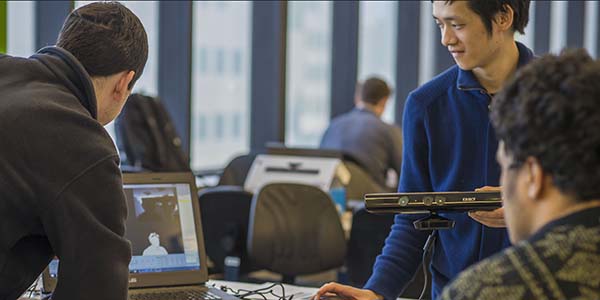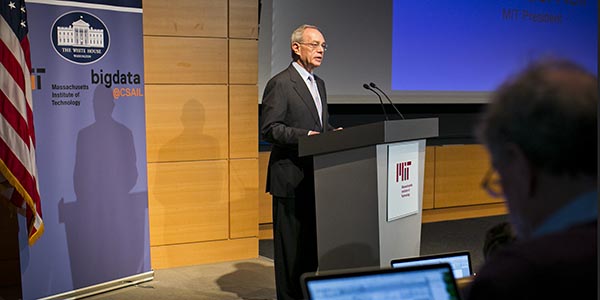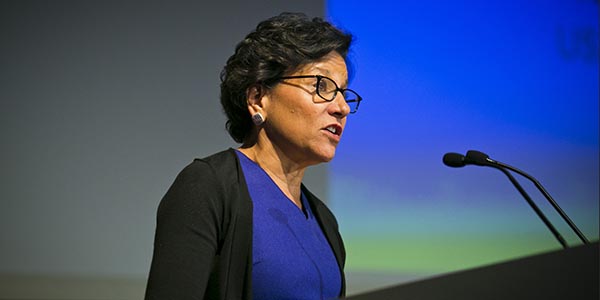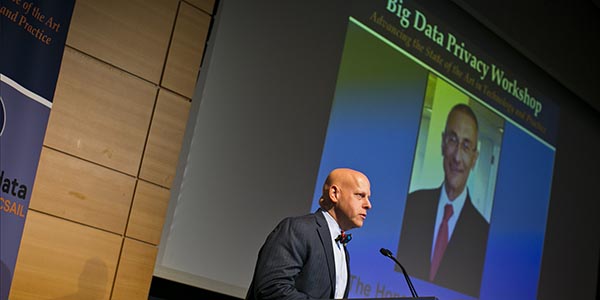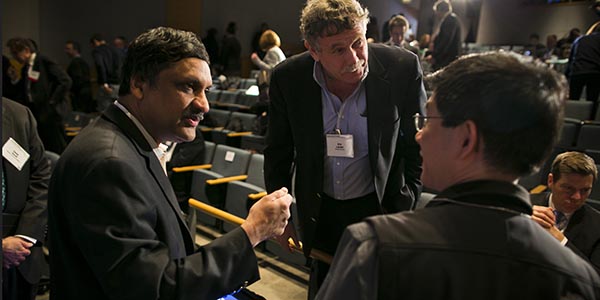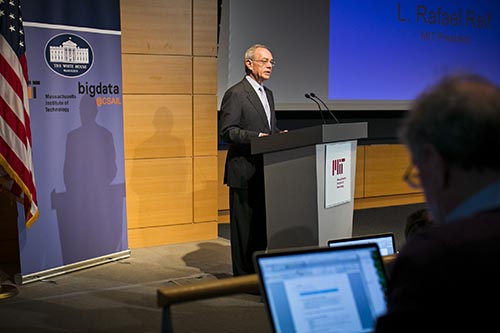MIT President L. Rafael Reif announced to the MIT community the permanent appointments of two longtime members of the MIT community to provost and chancellor. Martin A. Schmidt, a faculty member of the MIT Electrical Engineering and Computer ![Martin A. Schmidt, left, is appointed MIT Provost and Cynthia Barnhardt becomes MIT's Chancellor]() Science Department since 1988, and director of the Microsystems Technology Laboratories (MTL) from 1999 to 2006, has served as associate provost since 2008 and recently Acting Provost. (Read more about Martin Schmidt at his website.) President Reif's announcement also included the appointment of Associate Dean in the MIT School of Engineering Cynthia Barnhardt as MIT Chancellor, succeeding W. Eric Grimson, who served as MIT Chancellor from 2011 until his appointment in Oct. 2013 as Chancellor of Academic Advancement. [Photo right: Martin A. Schmidt, MIT Provost, Cynthia Barnhardt, MIT Chancellor. Courtesy of MIT News Office, Dominic Reuter, photographer]
Science Department since 1988, and director of the Microsystems Technology Laboratories (MTL) from 1999 to 2006, has served as associate provost since 2008 and recently Acting Provost. (Read more about Martin Schmidt at his website.) President Reif's announcement also included the appointment of Associate Dean in the MIT School of Engineering Cynthia Barnhardt as MIT Chancellor, succeeding W. Eric Grimson, who served as MIT Chancellor from 2011 until his appointment in Oct. 2013 as Chancellor of Academic Advancement. [Photo right: Martin A. Schmidt, MIT Provost, Cynthia Barnhardt, MIT Chancellor. Courtesy of MIT News Office, Dominic Reuter, photographer]
Read more in the Feb. 3, 2014 MIT News announcement by Steve Bradt titled "Martin Schmidt named provost; Cynthia Barnhart named chancellor Two faculty members named to MIT’s most senior academic posts first arrived at the Institute as students in the early 1980s.," also posted below in its entirety.
Two longtime members of the faculty — who first arrived at MIT in the early 1980s as graduate students — have been named provost and chancellor, the Institute’s two most senior academic posts.
Martin Schmidt, an electrical engineering professor who has served as associate provost since 2008 and as acting provost since last fall, has been named provost on a permanent basis, President L. Rafael Reif announced this morning in an email to the MIT community.
Reif also announced that Cynthia Barnhart, a professor in the Department of Civil and Environmental Engineering, is MIT’s new chancellor. Barnhart has been associate dean of the School of Engineering since 2007; she served as interim dean of engineering from 2010 to 2011.
Schmidt’s appointment as provost, MIT’s senior academic and budget officer, and Barnhart’s appointment as chancellor, with overarching responsibility for graduate and undergraduate education and student life, are both effective immediately.
Provost Martin Schmidt
Martin Schmidt, 54, is a professor of electrical engineering. As associate provost, he has played key roles in the allocation of physical space on campus; in co-leading the Institute-Wide Planning Task Force, which shaped MIT’s response to the global financial crisis; and in developing MIT’s plans for the future of Kendall Square.
“Marty brings to the role of provost a powerful combination of skills and experience as a teacher, advisor, administrator, researcher, inventor and entrepreneur,” Reif wrote in his letter, adding: “Marty has cheerfully accepted and successfully handled a great many sensitive, difficult assignments for the MIT community. In the process, he has become well known, inside and outside MIT, for his clarity, integrity, strategic perspective and ability to bring people together to get hard things done.”
“In three months as Acting Provost, Marty has proved himself an indispensable member of our senior team,” Reif wrote, “and I am delighted that he has accepted my offer to help lead MIT as provost.”
Schmidt says that his tenure as associate provost — and as director of MIT’s Microsystems Technology Laboratories (MTL) from 1999 to 2006 — has broadened his appreciation of the Institute, stoking an intellectual curiosity that attracts him to his new, more expansive role.
“I find great joy in learning about new fields,” Schmidt says. “What I find most exciting about the opportunity to serve as MIT’s provost is the intellectual stimulation that I know will come from engaging with all the diverse parts of this extraordinary institution.”
A native of Mountain Top, Pa., Schmidt has been at MIT since 1981, when he arrived to pursue graduate studies in the Department of Electrical Engineering and Computer Science (EECS). He earned his SM in 1983 — largely for research conducted at Lincoln Laboratory — and his PhD in 1988.
“I’ve always been interested in making things — since my teenage years, when I would rebuild cars or build furniture,” says Schmidt, who arrived at MIT, fresh from receiving his BS in electrical engineering at Rensselaer Polytechnic Institute, with a strong interest in integrated circuits. “When I came to MIT, the frontiers of my field were in microelectronics — the drive to make transistors smaller and smaller. But I soon became aware of the potential to apply miniaturization elsewhere.”
Recognizing that the skills he had honed for microelectronics could be useful in other fields, Schmidt broadened his horizons as a graduate student, turning to miniature sensors for use in factories or vehicles. (At the time, sensors governing airbag deployment were a hot topic.) He later conducted research on sensors to detect turbulence, with a mentor from the Department of Aeronautics and Astronautics who ultimately co-supervised his doctoral thesis on the topic.
When Schmidt joined the MIT faculty as an assistant professor upon earning his PhD, his enthusiasm for interdisciplinary collaboration drew him to partner with colleagues outside EECS, and even outside MIT. Attracted to problems with practical applications, he also found himself working closely with industrial collaborators: with 3M on miniature sensors for monitoring plastic processing, with Bosch on micromachined valves, and with General Motors on crash sensors, among others. He holds more than 30 issued U.S. patents.
“I’m a guy who knows how to make small things, for whatever applications they may be useful in,” Schmidt says. “I enjoy working on these devices until they are ready for commercialization. At that point, the research problem starts to feel too constrained, and I look to move on as the guardrails close in.”
Drawing on his extensive experience as an inventor and entrepreneur, Schmidt served on MIT’s commission on Production in the Innovation Economy; in 2011, when the White House asked MIT to help drive its Advanced Manufacturing Partnership, it was a natural next step for Schmidt to serve as faculty lead. The following year, Schmidt was appointed to oversee two of MIT’s industry-facing offices, the Technology Licensing Office and the Office of Corporate Relations. More recently, he championed and helped to shape MIT’s new Innovation Initiative.
Schmidt’s entrepreneurship has its roots in the 1990s, when he cultivated an interest in microfluidics. He began a lengthy collaboration with Klavs Jensen, a professor with joint appointments in chemical engineering and in materials science and engineering, to develop miniature chemical reactors. The resulting devices, roughly half a cubic centimeter in size, burn fuel at temperatures of 700 to 800 degrees Celsius — but when surrounded by an insulating chip, are safe to the touch. This yields a handheld reactor that, when merged with a solid-oxide fuel cell, can convert chemical fuel to electricity.
The effort gave rise to startup Lilliputian Systems, launched in 2002, one of six companies Schmidt has had a role in starting. Two others grew out of microfluidics research with a pair of biomedically oriented colleagues, Martha Gray and Mehmet Toner, that allowed the manipulation of individual cells in blood. One of these companies — Living Microsystems, later renamed Verinata Health, and purchased last year by Illumina — developed a test for prenatal screening based upon a maternal blood draw, eliminating the need for amniocentesis.
“Each stage of my career at MIT has exposed me to new communities within MIT and new ways of thinking about the world and the work of the Institute,” Schmidt says. “When I began collaborating with chemical engineers, I learned an entirely new way of thinking about engineering. Similarly, to lead MTL, I had to explore the work of everyone in the lab. As associate provost, my role in allocating physical space gave me a unique perspective on the distinctive needs of every part of MIT, and my involvement in the Institute’s response to the global financial crisis represented an intensive education in MIT’s financial operations.”
The provost is MIT’s senior academic and budget officer, with overall responsibility for the Institute’s educational programs, as well as for the recruitment, promotion, and tenuring of faculty. As provost, Schmidt will work closely with the deans of MIT’s five schools to establish academic priorities, and with Executive Vice President and Treasurer Israel Ruiz to manage the financial planning to support these priorities. The provost also oversees the Institute’s library system and works with Vice President for Research Maria Zuber to coordinate support for research priorities.
As provost, Schmidt succeeds Professor of Biology Chris A. Kaiser, who stepped down last fall to return to teaching and research. Reif’s selection of Schmidt — following consultation with many members of the faculty, as well as students — was enthusiastically endorsed by the Executive Committee of the MIT Corporation. Reif also considered the input of members of the MIT community who submitted comments and suggestions.
Schmidt and his wife of 27 years, Lyn, who is active in volunteer organizations, live in Reading. They have four sons: Derek, who works for State Street Corporation; Brian, a senior at the University of Connecticut; Kevin, a freshman at the University of Maine; and Danny, a senior at Reading Memorial High School.
Chancellor Cynthia Barnhart
Cynthia Barnhart, 54, is the Ford Foundation Professor of Engineering, with an appointment in the Department of Civil and Environmental Engineering and a joint appointment in the Engineering Systems Division. She has been associate dean of the School of Engineering since 2007, working closely with the dean of engineering on major areas of responsibility including tenure and promotion, budgets, strategic planning, and the day-to-day operations of MIT’s largest school. She served as interim dean of the School of Engineering from July 2010 to January 2011.
As associate dean, Barnhart has held primary responsibility for overseeing faculty searches, ensuring that hiring practices achieve the highest possible faculty quality and diversity. She also chaired the School of Engineering Education Council, working to facilitate teaching and learning across disciplines, and led committees that developed policies that have increased flexibility in dual faculty appointments and established guidelines for faculty mentoring in the School of Engineering.
“A clear-eyed problem-solver in the classic MIT tradition, Cindy was drawn to MIT by our culture of approaching hard problems by thinking across disciplines and Schools,” Reif wrote in his letter to the MIT community, noting that “Cindy has coupled her academic achievements with wide-ranging service to MIT.”
“Cindy comes to the chancellorship with a lively awareness of the demands and realities of student life on campus,” Reif added. “In interviewing for this position, she explained to me that from the start of her time on the faculty — a job she began when her first child was three weeks old — she has made a conscious effort to prove that it is possible to have both a successful career and a satisfying family life; her commitment and her example on this score will be tremendously useful in helping our famously intense community strike a productive balance.”
MIT’s chancellor oversees graduate and undergraduate education, student life, student services, and other areas with impact on the student experience. The deans of graduate education, undergraduate education, and student life all report to the chancellor; the Office of Digital Learning reports to both the chancellor and the provost. Together with the provost, the chancellor advises the president and participates in strategic planning on faculty appointments, resource development, and Institute resources and buildings. “I’m thrilled to have the opportunity to serve as chancellor,” Barnhart says, “because the position is all about students and their learning and life experiences at MIT. I can think of nothing on our campus more important to me.”
Barnhart has served as an undergraduate adviser every year since 1992, and has supervised 83 graduate and undergraduate theses of students in the departments of Civil and Environmental Engineering, Aeronautics and Astronautics, Mechanical Engineering, and Electrical Engineering and Computer Science; in the Engineering Systems Division; and in the MIT Sloan School of Management. She has taught courses on large-scale optimization, airline operations research, the global airline industry, and transportation operations, planning, and control.
The mother of two daughters, both in college, Barnhart says, “MIT students are, of course, unbelievably smart. I love the way they think, and how they so often teach me something unexpected. I look forward to spending as much time as I can learning from them in this new role.”
Barnhart is a native of Barre, Vt. After earning her BS from the University of Vermont in 1981, she spent two years at the engineering firm Bechtel, where she worked as a planning and scheduling engineer for the Metro subway system in Washington, D.C. She arrived at MIT in 1984 to pursue graduate work in transportation and operations research, earning her SM in transportation in 1985 and her PhD in 1988.
“I came to MIT because its programs weren’t siloed; they were highly interdisciplinary, even in the 1980s,” Barnhart says. “I had the entire Institute at my fingertips. The barriers between departments are low and porous here. When you’re at MIT, you’re at MIT — the whole place.”
After earning her degrees, Barnhart took a faculty job at the Georgia Institute of Technology for four years before rejoining MIT as an assistant professor in 1992. She became an associate professor in 1995 and a full professor in 2002.
She served as co-director of the Center for Transportation and Logistics from 2001 to 2003, and has served twice as co-director of MIT’s Operations Research Center, from 1999 to 2002 and from 2006 to 2010. Since 2009, she has also served as the director of Transportation@MIT, an interdisciplinary initiative that integrates the work of hundreds of faculty members to invent new technologies and innovative systems to meet the growing global demand for mobility.
Barnhart, a member of the National Academy of Engineering, focuses her research on optimizing transportation systems, especially in aviation. She develops mathematical models and algorithms, often context- and data-driven, to shape the design of transportation systems. She has advised domestic and international airlines on schedule design and resource utilization, and the Federal Aviation Administration on policies to improve the U.S. aviation system overall, particularly on topics around congestion and delays.
Among other findings, Barnhart’s modeling has shown that using administrative controls or market mechanisms to limit the number of scheduled flights to airport capacity — practices not currently used in scheduling flights at most U.S. airports — could significantly reduce passenger delays while boosting airline profits.
“I enjoy problems that can be subjected to rigorous analysis, but that have no one right answer,” Barnhart says. “There is a blending of art and science in building optimization models; the art is capturing a real-world problem with a mathematical model, and the science is devising approaches to solve it.”
Barnhart succeeds former Chancellor W. Eric Grimson, who left the post to assume a new role in MIT’s upcoming fundraising campaign. She was selected as chancellor following a process of consultation with MIT faculty, staff, and students. The Institute’s Undergraduate Association (UA) and Graduate Student Council (GSC) created an eight-member Chancellor Search Advisory Cabinet to advise Reif; the president also received input from the students nominated by the UA and GSC to serve on a Presidential Advisory Cabinet, which advises him on a range of student issues. Reif also met with faculty and staff to hear their thoughts on the qualities and attributes most important in a new chancellor. Finally, Reif’s selection of Barnhart was enthusiastically endorsed by the Executive Committee of the MIT Corporation.
In the coming months, Barnhart plans to set her priorities as chancellor by meeting with students in formal and informal settings. “I want to make the student experience at MIT as positive and fulfilling as possible,” she says, “and I look forward to engaging fully with students to make that happen.”
Barnhart and her husband, Mark Baribeau, managing director and head of global equities at Jennison Associates, live in Wellesley. They have two daughters: Olivia, a senior at Colby College, and Julia, a freshman at Santa Clara University.
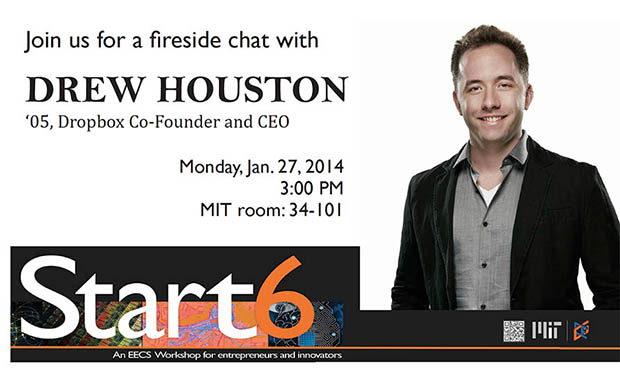
 Computer Science and Artificial Intelligence Lab (CSAIL) and EECS graduate students Sang-Woo Jun and Ming Liu, working with
Computer Science and Artificial Intelligence Lab (CSAIL) and EECS graduate students Sang-Woo Jun and Ming Liu, working with 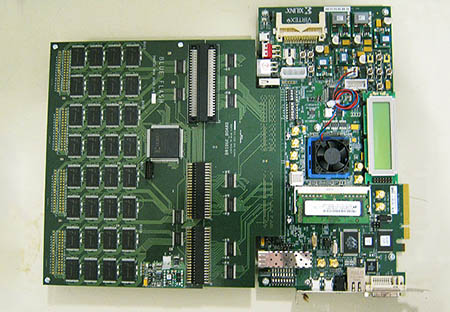
 in MIT's Research Laboratory of Electronics (RLE), has been selected for a CAREER Award from the National Science Foundation in support of work
in MIT's Research Laboratory of Electronics (RLE), has been selected for a CAREER Award from the National Science Foundation in support of work 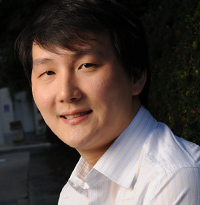
 Science Department since 1988, and director of the
Science Department since 1988, and director of the 
 Srini Devadas
Srini Devadas


 Researchers at MIT’s Microsystems Technology Laboratory (MTL) including
Researchers at MIT’s Microsystems Technology Laboratory (MTL) including 






 Each year, the Dan David Foundation, headquartered at Tel Aviv University, selects a laureate — for each of three time dimensions past, present and future — who represents the culmination of innovative and interdisciplinary research that fosters universal values and goals promoting outstanding scientific, technological, cultural or social achievements that improve the world.
Each year, the Dan David Foundation, headquartered at Tel Aviv University, selects a laureate — for each of three time dimensions past, present and future — who represents the culmination of innovative and interdisciplinary research that fosters universal values and goals promoting outstanding scientific, technological, cultural or social achievements that improve the world.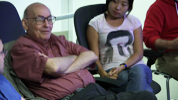


 Prof.
Prof. 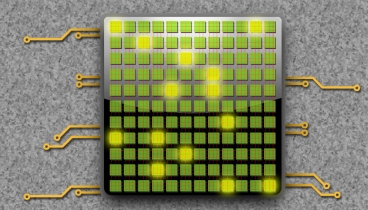





































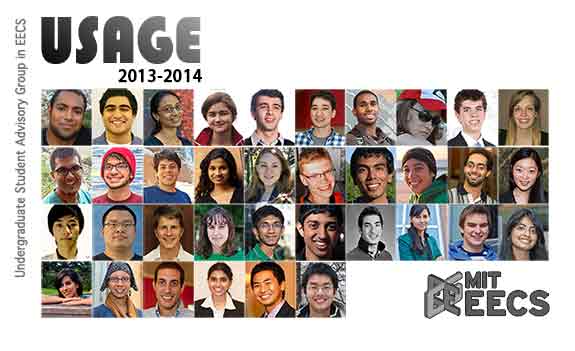
 Award named in honor of Prof. Jonathan Allen, sixth director of the Research Laboratory of Electronics, for his dedication to mentoring and developing junior faculty members.
Award named in honor of Prof. Jonathan Allen, sixth director of the Research Laboratory of Electronics, for his dedication to mentoring and developing junior faculty members.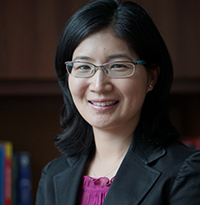
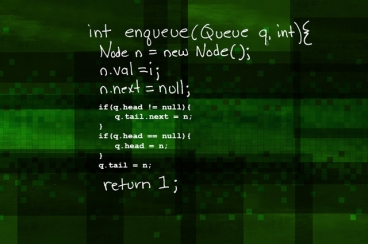

 In 2012, Bhatia and colleagues introduced the concept of a synthetic biomarker technology to amplify signals from tumor proteins that would be hard to detect on their own. These proteins, known as matrix metalloproteinases (MMPs), help cancer cells escape their original locations by cutting through proteins of the extracellular matrix, which normally holds cells in place.
In 2012, Bhatia and colleagues introduced the concept of a synthetic biomarker technology to amplify signals from tumor proteins that would be hard to detect on their own. These proteins, known as matrix metalloproteinases (MMPs), help cancer cells escape their original locations by cutting through proteins of the extracellular matrix, which normally holds cells in place.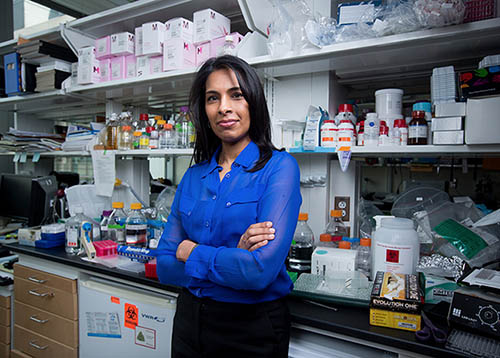
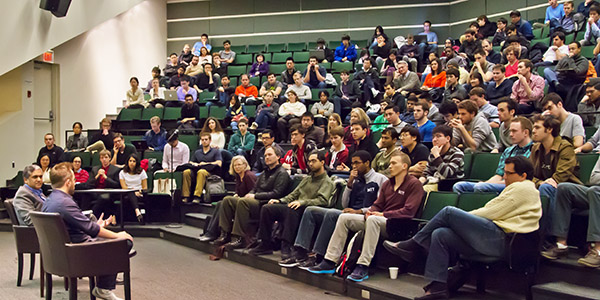
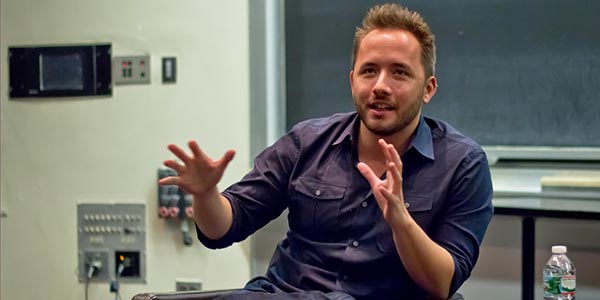
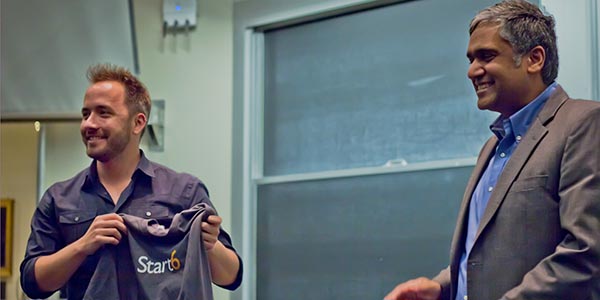
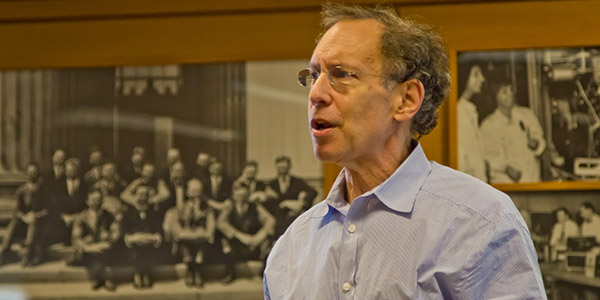
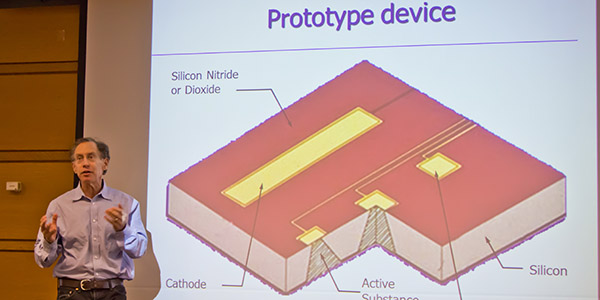
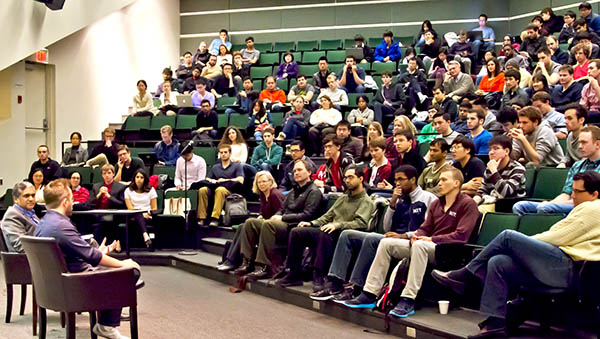
 Charles E. Leiserson
Charles E. Leiserson